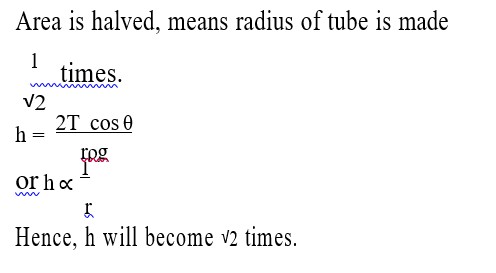13.8 Three vessels of equal capacity have gases at the same temperature and pressure. The first vessel contains neon (monatomic), the second contains chlorine (diatomic), and the third contains uranium hexafluoride (polyatomic). Do the vessels contain equal number of respective molecules? Is the root mean square speed of molecules the same in the three cases? If not, in which case is vrms the largest?
13.8 Three vessels of equal capacity have gases at the same temperature and pressure. The first vessel contains neon (monatomic), the second contains chlorine (diatomic), and the third contains uranium hexafluoride (polyatomic). Do the vessels contain equal number of respective molecules? Is the root mean square speed of molecules the same in the three cases? If not, in which case is vrms the largest?
-
1 Answer
-
13.8 (a) According to Avogadro's law, the three vessels will contain an equal number of the respective molecules. This number is equal to Avogadro's number, N = 6.023
(b) The root mean square speed ( of a gas of mass m and temperature T is given by the relation . Where k is Boltzmann constant. For the given gases, k and T are constants. Hence depends only on the mass of the atoms

Therefore, the root mean square speed of the molecules in the three cases is not the same. Among Neon, Chlorine and Uranium hexafluoride, the mass of the neon is the smallest, so Neon will have the highest root mean square sp
...more
Taking an Exam? Selecting a College?
Get authentic answers from experts, students and alumni that you won't find anywhere else
Sign Up on ShikshaOn Shiksha, get access to
- 65k Colleges
- 1.2k Exams
- 679k Reviews
- 1800k Answers



